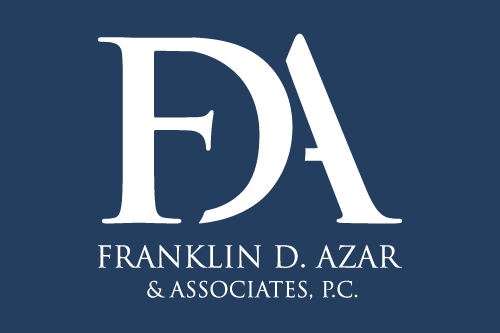If you were suffering from some form of internal bleeding, no matter how gradual or difficult to detect, you’d want to know about it — and you’d probably seek immediate medical attention to address the problem before disaster strikes.
By the same token, if you discovered that there was a leak in the water or gas lines in your home, you’d want it located and fixed ASAP to keep your loved ones safe and head off major repair costs down the road.
Yet most Americans aren’t quite as vigilant when it comes to fixing leaks in their retirement savings plans that can threaten their long-term financial health. One survey by the American Association of Retired Persons indicates that more than two-thirds of the participants in 401K plans don’t realize that the companies in charge of those plans collect a variety of fees for those services — and thus have no idea how much those fees are costing them. Expressed as a percentage of the assets under management, the fees might seem negligible; but they can amount to a drain of thousands of dollars a year for some participants. Over the life of a plan, the fees can reduce the potential earnings of your 401K by hundreds of thousands of dollars.
As USA Today pointed out in one analysis, the difference between a two percent charge in annual fees for one 401K plan, as opposed to half of one percent for another, can add up to $220,000 in earnings lost. That’s the difference in results for someone saving $10,000 a year for 30 years and averaging a seven percent annual return on investment.
The stakes involved are mind-boggling. More than 94 million Americans participate in some form of retirement contribution plan at work. There are more than 831,000 separate plans, totaling $6 billion in assets — most of them 401K plans. The majority of the plans are relatively small, with less than $5 million in assets each, but the industry is dominated by a handful of major financial services companies. According to PlanSponsor’s annual survey, the industry’s top ten providers manage 72 percent of the assets involved.
Some of the fees these companies charge may be customary, reasonable and, in many cases, unavoidable. Others may be excessive and self-serving, designed to boost company profits at your expense. In order to keep fee-happy fund managers from pecking away at your nest egg, it’s important to understand the basics of the fees involved — and what you can do to stop the bleeding.
Although many different fees are involved, they tend to fall into two types of fees associated with 401K plans. The first is what’s known as “direct compensation,” which involves direct payments from a plan for specific services. A company might charge each participant a set amount for record-keeping, for example, or it might charge a percentage of plan assets for the same service; the disparity between a flat fee versus a percentage of assets, in terms of the actual amount deducted from each participant’s account, can be dramatic. For example, a person who has a balance of $100,000 in a plan that charges an asset-based fee of one percent will pay $1000 for exactly the same recordkeeping services that a person with a balance of $10,000 will pay $100 for.
The second method, “indirect compensation,” is also known as revenue sharing. These fees are paid by the mutual funds for marketing and recordkeeping services. Sometimes called 12(b)-1 fees, they are added to the operating cost of the mutual funds. Indirect compensation can add thousands of dollars to the cost of plan administration, while reducing the investment returns to plan participants.
Sorting out all the fees and trying to figure out if they’re appropriate can be a daunting task. A 2012 change in regulations requires your 401K provider to disclose all direct fees and fund investment performance annually to participants, but does not require disclosure of the amount of indirect fees paid by the plan. Mutual fund prospectuses disclose the amount of 12(b)-1 fees charged by the funds as a percentage of the operating costs, but they do not typically disclose how much is paid to a particular plan recordkeeper. You can also go to various sites online, including It’s Your Money and BrightScope, that can help you research and compare plans. (A good number for comparison purposes is .64 percent – the average expense ratio for mutual funds and exchange-traded products, according to a 2015 Morningstar study.)
You can take several steps to reduce the amount you pay in fees. Depending on the options your plan offers, you may be able to select funds that offer significant potential for returns but lower fees. In general, index (or “passively managed”) funds tend to involve fewer fees and lower operating costs than actively managed funds, which will generate more management and transaction charges. Studies indicate that only a small percentage of active fund managers consistently outperform the benchmark indexes in their field over a multiyear period, so why put up with the higher fees? (At the same time, don’t assume that a company known for low-cost funds will automatically charge your plan less for the funds it offers. That isn’t always true.) Often a mutual fund sponsor will offer a different share class of the same mutual fund with lower operating costs and no 12(b)-1 fees to a qualified retirement plan.
If your plan doesn’t offer low-cost alternatives, consider contacting your employer’s plan administrator. Companies are expected to review a plan’s performance on a regular basis to see if it’s meeting expectations. If your employer isn’t eager to aid you in your quest for lower fees, you can also decide how much you want to contribute to a voluntary plan at work, as opposed to an IRA plan you can select yourself. Some 401K participants find that the employer match component makes the plan attractive despite the fees involved; others may decide to put their money elsewhere.
You should seek professional advice if you suspect that your plan has been mismanaged or depleted by unreasonable and excessive fees. Franklin D. Azar and Associates has taken on large companies to help people recover for their injuries and losses for more than 30 years. We are currently investigating several large retirement plans for mismanagement, as well as smaller plans that may have been subject to excessive asset-based fees. We are interested in recovering the money participants may have lost due to these excessive fees—and in preventing such losses for others in the future.
Our dedicated team of class action lawyers is experienced and ready to help you fight for your rights, so you can achieve the retirement you deserve. If you believe that your 401K or 403B plan has been impacted by mismanagement or excessive fees, contact our office. The consultation is free, and if there is no recovery, there is NO FEE.


